Idea Book: Decorative Glass Offers an Appealing Blend of Art and Science
While still an essential part of a project’s aesthetic success, decorative glass also increasingly serves a very functional purpose for projects, say industry leaders. The projects showcased in this ideabook demonstrate that range, showing decorative glass at its best and most versatile, from sculptural artwork, to high-performance building material.
“As new building codes around the world are requiring architects to implement a greener approach into a project’s envelope, the higher the demand for a functional decoration on a glass façade, especially for the exposed side of the glass units,” says Eyal Porat, architect support specialist at Dip-Tech. Resistant to harsher weather conditions, decorative inks also “have the capability of reducing glare, which eventually reduces inner heat, outdoor reflection and even help birds from colliding into the façade,” he says.
Textured glass is also replacing clear glass in some applications due to privacy concerns, says Donald Jayson, co-owner and executive vice president of Bendheim. “Many people are tired of the ‘fishbowl’ effect,” he says. “There is also a growing need for enhanced privacy, both visual and acoustic, with increased use of sound-attenuating interlayers.”
Decorative interlayers also need to be high-performance, says Michael Ondrus, architectural market development manager, Americas, at Eastman Chemical Co. That includes enhancing aesthetics, and even providing protection, he says. “Color interlayer is ... versatile in that it can be used with coated, ceramic-fritted, decorative pattern and etched glass types to bring multiple aesthetics together while providing safety and a level of security,” says Ondrus.
Demand for larger sizes of decorative glass also continues, pushing the envelope for digital printers, says Porat. “Certain retail stores and larger scale projects are requiring glass companies to supply larger glass panels, and by consequence, we are required to adapt the technology to this new scale,” he says. “The challenge was to design and manufacture much larger printers that in some cases have the capability to print on up to [59-foot] long glass panels.”
Larger size decorative glass also must be high-performance, says Muhammad Arif, decorative products manager, GGI. “Jumbo glass is always a bit of a challenge when it comes to decorative glass because many times the finished product must also meet multiple design requirements, so it’s not only decorative—it must also be energy-efficient, fire-rated or laminated for overhead glazing,” he says. “However, what we seem to encounter more frequently is oversized custom artwork that will be incorporated into a curtain wall, which means each panel of glass [or insulating glass unit] has a part of the design and once the curtain wall is completely glazed it all comes together—like pieces of a puzzle.”
Meeting a variety of aesthetic and functional requirements has required problem-solving, says Xose Hermida Garcia, director of the architecture business unit at Tecglass. “Our main challenges are to be able to provide solutions in terms of inks with special color effects, digital printers and tools able to simplify the decoration of jumbo size glass panels, and design support by developing texture and patterns―classic, modern or natural―to help the architects’ jobs.”
EXTERIOR PROJECTS
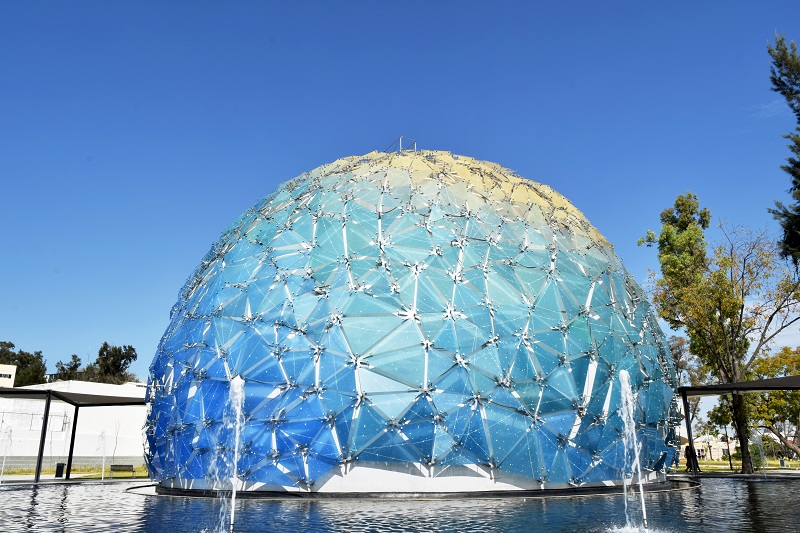
Tecglass
Jalisco planetarium and the "Lunaria" interactive center in Jalisco, México features Guardian Glass’s extra clear 6-millimeter glass, fabricated by Mexico-based fabricator, Megaglass, using Tecglass digital printing. The challenge posed by the project’s dome was solved through use of parametric software that generated a total of 1,380 different pieces of printed tempered glass, on whose faces are projected the constellations visible in the city from the north hemisphere side, according to company officials.
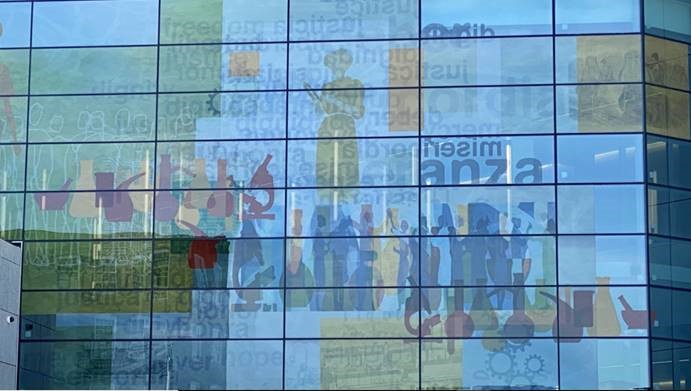
VIRACON
The new Science & Engineering Complex on the Medford Campus of Tufts University consists of three buildings, 175,000 square feet in total. Viracon supplied 1 ¼-inch VNE1-63 insulating glass HS/FT, as well as 1 ¾-inch VNE1-63/VE1-85 insulating glass HS/HS/HS, both with Digital Distinctions.
Photography credit ©JeffAdamsPhoto.com. Printed using Dip-Tech digital printer and ceramic inks.
GGI
The Momentary is an adaptive reuse project in Bentonville, Arkansas, designed by Wheeler Kearns Architects, which transformed a Kraft Foods plant into a visual art exhibition space and performance venue. Tristar Glass commissioned GGI to fabricate the custom artwork glass panels for the glazing utilized in the roof area, and areas of the building façade. GGI created the decorative glass panels using its Alice direct-to-glass ceramic frit printing process which was combined with a high-performing low-emissivity laminated glass to produce the insulating glass units for the overhead glazing.
Photo courtesy of Tristar Glass. Alice direct-to-glass digital ceramic printing is enabled by Dip-Tech printing technology.
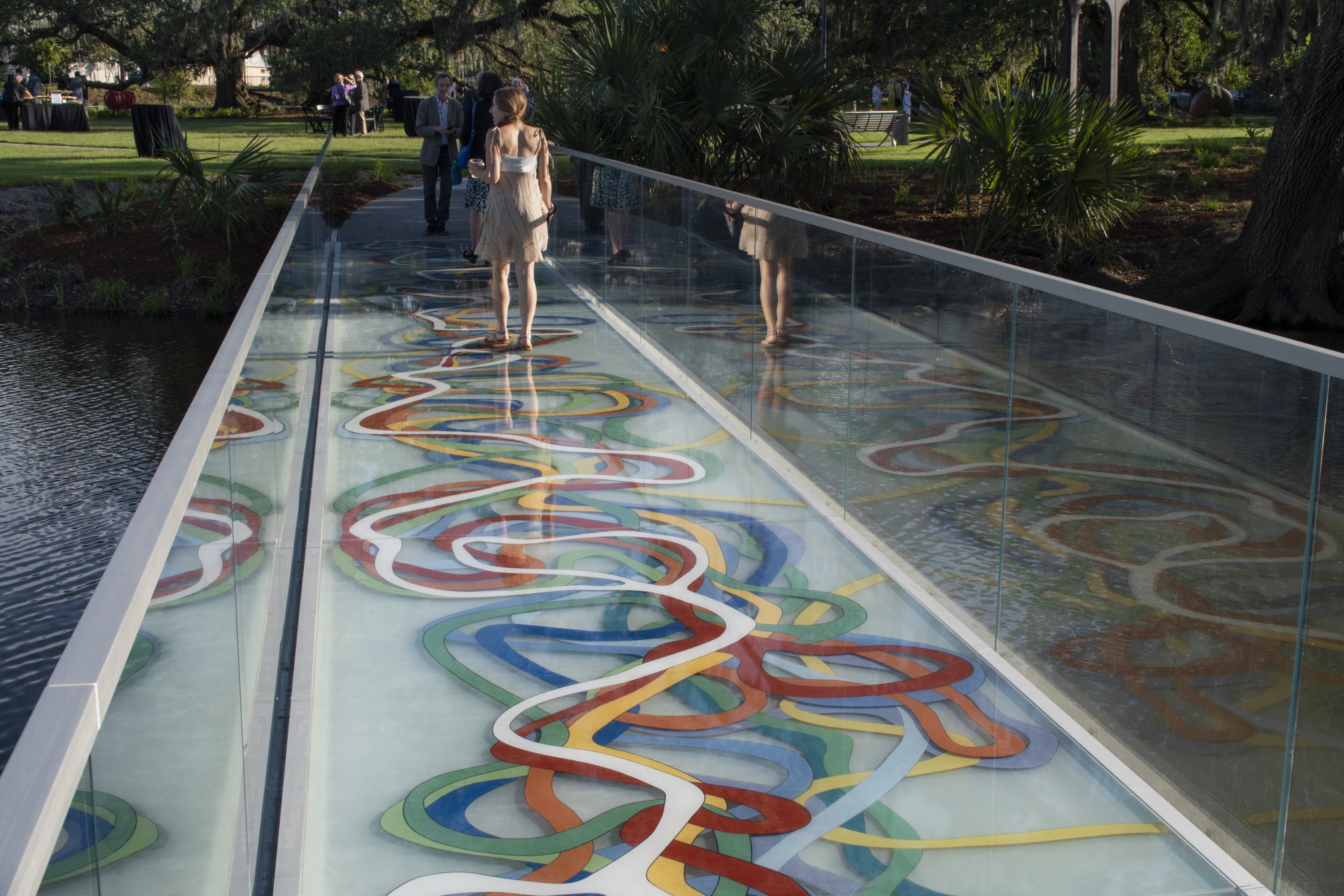
PULP STUDIO
The Bestoff Sculpture Garden bridge, part of the New Orleans Museum of Art, was designed by artists Elyn Zimmerman and Blake Ogden. Pulp Studio fabricated the seven glass panels, each 72 inches by 120 inches and two inches thick. The company utilized different print layers to allow the artists’ imagery to be seen as a layered image rather than one flat image. DeGeorge Glass Co. installed the glass.
Photo by Blake Ogden.
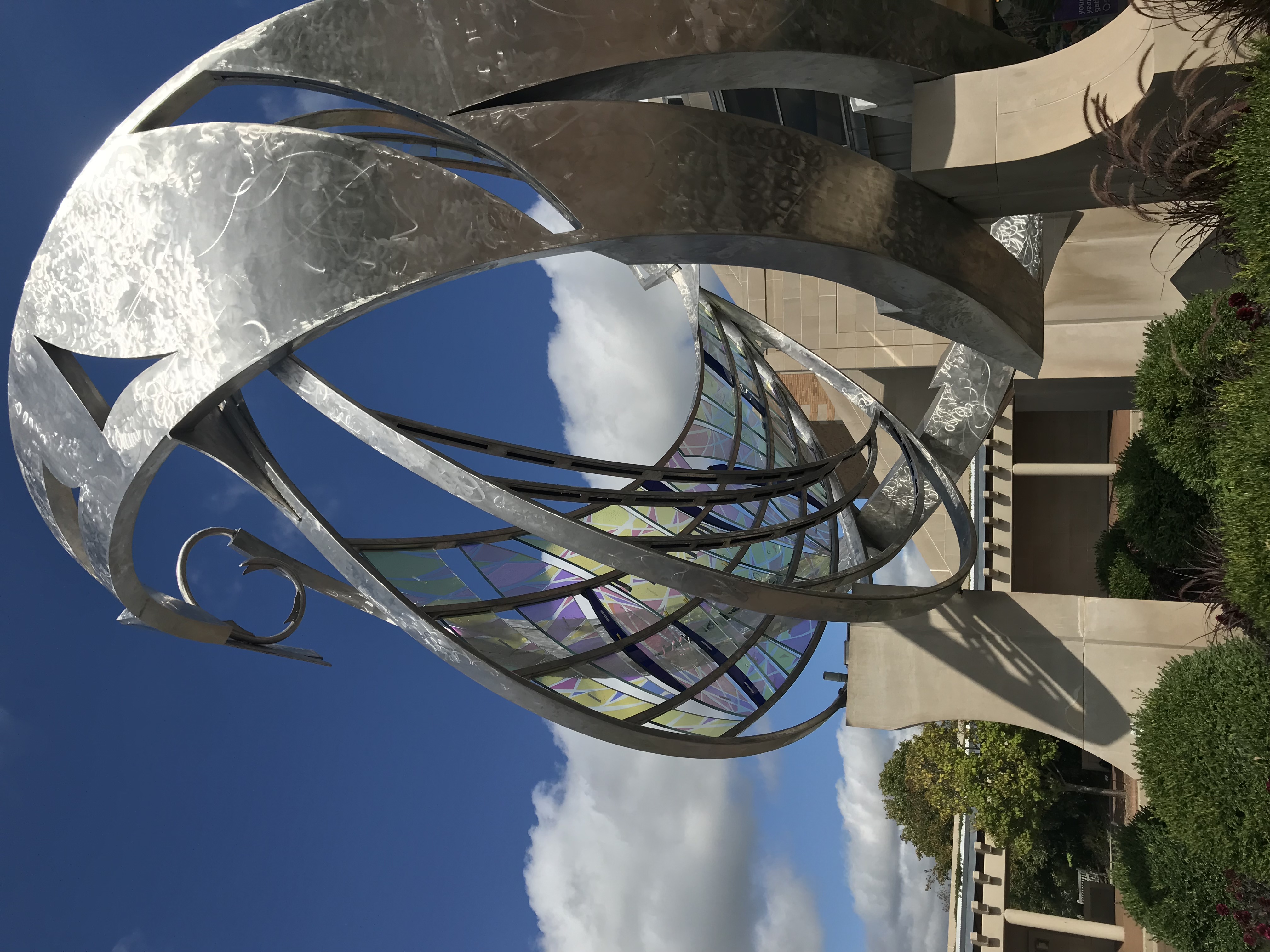
Dependable Glass Works
The sculpture, entitled “Catalyst,” was designed by artist Beverly Stucker Precious and installed on the campus of Minnetrista, a year-round gathering place located in Muncie, Indiana, in 2004. After exposure to the elements lead to wear and tear, fabricator GRT Glass Design worked with Dependable Glass Works to restore the piece, utilizing the latter’s polyurethane lamination process and tempering process to fabricate the dichroic glass.
INTERIOR PROJECTS
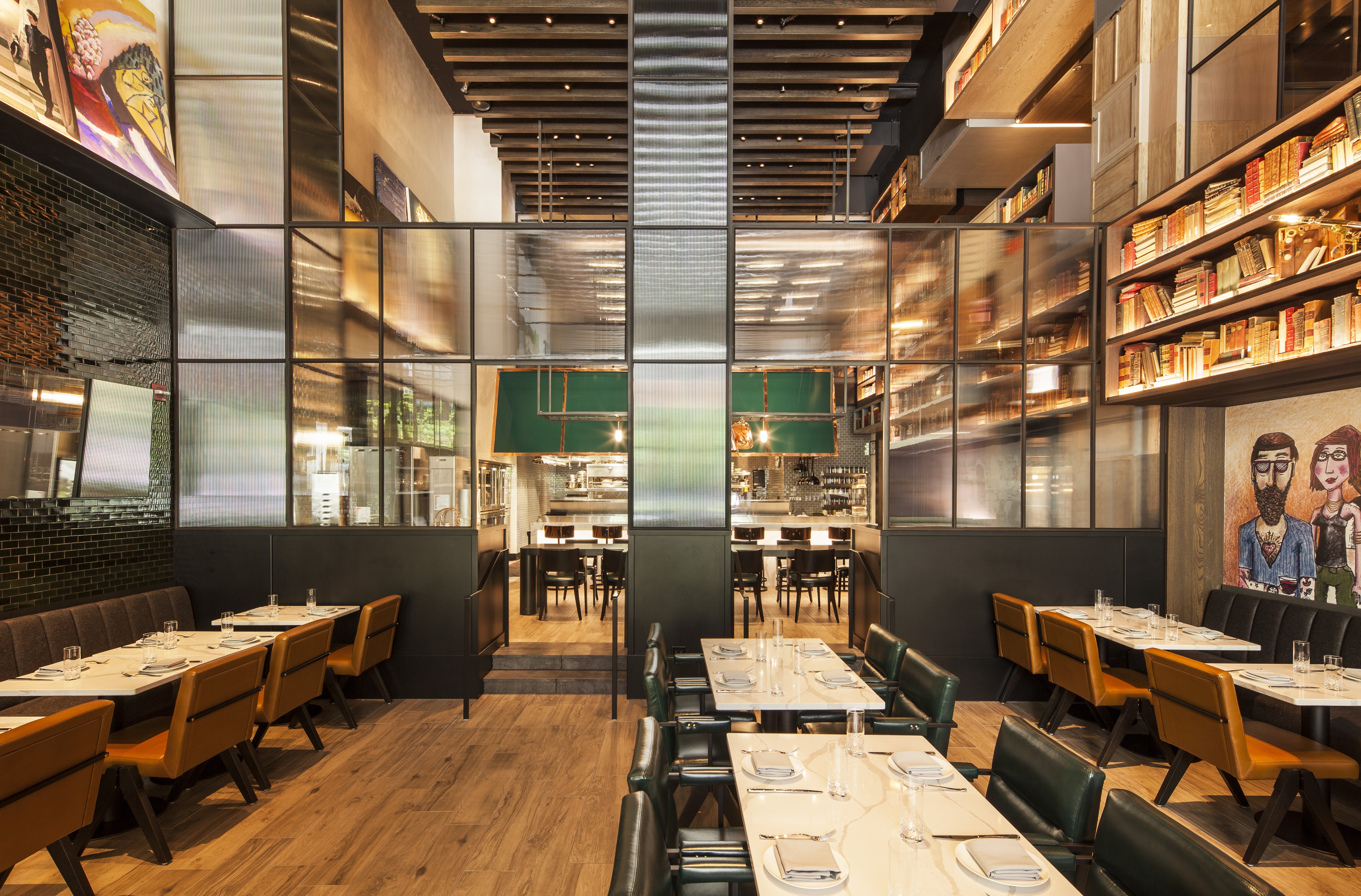
Bendheim
Designed by Rockwell Group, the new EMC2 Autograph Hotel, located in Chicago, feature glass interiors fabricated by Bendheim and installed by SG Glass. The company’s low-iron fluted glass and fluted mirror highlight the boutique hotel’s lobby and restaurant.
Photo by Michael Kleinberg photography.
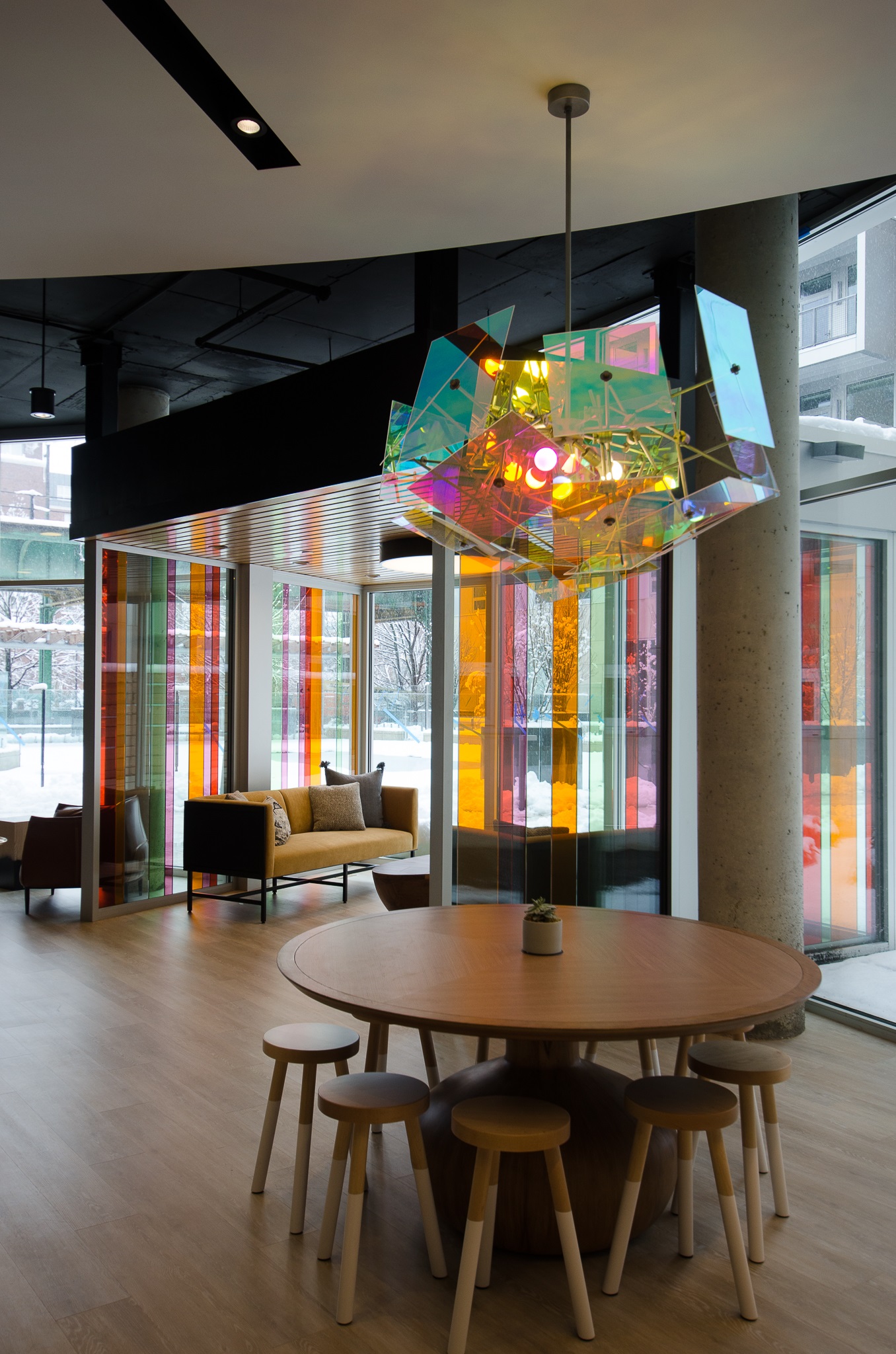
Eastman Chemical Co.
AVA North Point, a newer construction multifamily project located in North Cambridge, Massachusetts, incorporates colored glass filtering light and color into the storefront sitting niche. The glass was laminated by Pulp Studio with Eastman’s Vanceva Colors interlayers, and the project was designed by Degen & Degen.
Photo credit © Erin Brodhead, principal at Degen & Degen.
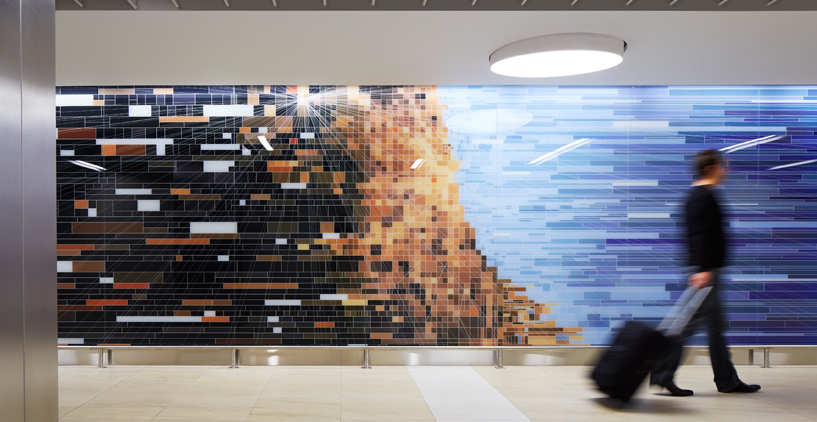
Dip-Tech
The glass installation at O’Hare international Airport was designed by architect Epstein with the conceptual designers at Thirst Design Communication. Working with an artist, the team translated NASA satellite photos of Chicago into a mosaic tile pattern, using fabricator Goldray’s digital ceramic printing process and Dip-Tech’s printing technology.

